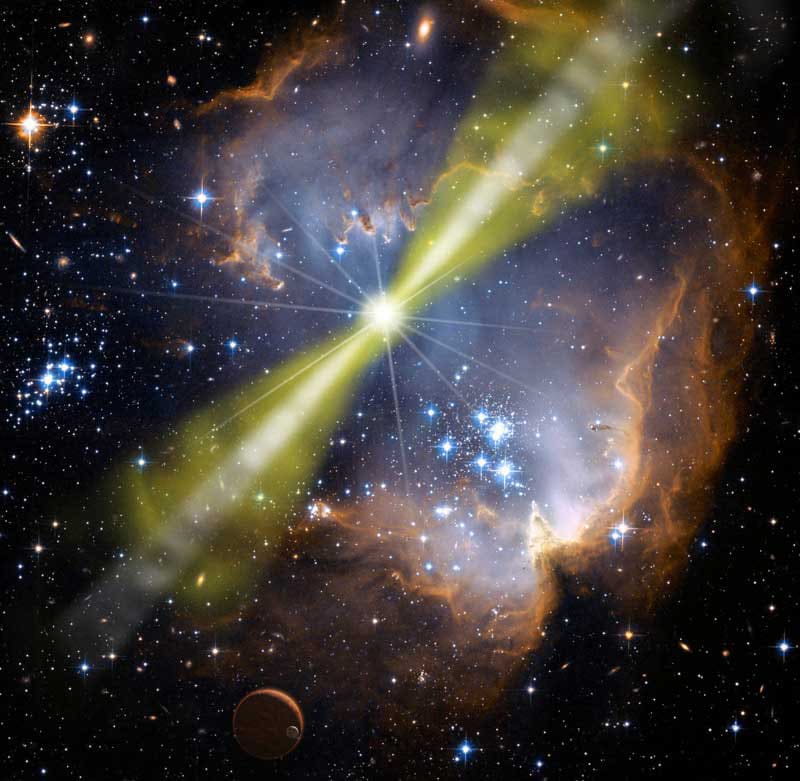Gamma-ray bursts (GRBs) were once the most promising candidate source of ultra-high-energy cosmic rays (UHECRs). They release extremely large amounts of energy in short periods of time, so if they could accelerate protons as they do electrons, then GRBs could account for most of the observed UHECRs.
But along comes IceCube, the first gigaton neutrino detector ever built, ready to dig into the origin of UHECRs using neutrinos. There’s a whole universe in which to look for a signal but, to test GRBs as possible sources, they started with a search for neutrinos in coincidence with observed GRBs. Previous results, published by the IceCube Collaboration in 2012 in Nature, found no such coincidence. This cast doubt on GRBs as the main source of UHECRs. In a follow-up study submitted today to the Astrophysical Journal Letters, the collaboration shows that the contribution of GRBs to the observed astrophysical neutrino flux cannot be larger than about 1%.
The study also sets the most stringent limits yet on GRB neutrino production, excluding much of the parameter space for the most popular models. The collaboration is now also providing a tool to set limits on other GRB models using IceCube data.

One may wonder how observing neutrinos in Antarctic ice tells us anything about cosmic rays and GRBs. The answer is simple, if you ask a physicist: neutrinos are an unambiguous signature of proton acceleration. And cosmic rays are, in their vast majority, very high energy protons.
That cosmic rays exist at energies up to 10^20 eV is a fact; we have observed them with all sort of detectors since their discovery by Victor Hess back in 1912. Physicists have developed several models that could explain how and where cosmic rays can be accelerated to such extreme energies. All of these models also tell us that any cosmic proton accelerator that we can imagine would also be a very high energy neutrino generator. While cosmic rays are scrambled by intergalactic magnetic fields, neutrinos travel in straight paths, potentially allowing us to identify their sources. For this reason, the search for the sources of cosmic rays has also become the search for very high energy neutrinos.
IceCube, the first detector to measure a very high energy neutrino flux, is now squeezing every bit of information out of its data, to learn more about the origins of those neutrinos and thus of cosmic rays. In the current research, IceCube has looked for a neutrino signature in coincidence with over 500 GRBs observed during the data-taking period from April 2008 to May 2012. A single low-significance neutrino was found, confirming previous results by the collaboration. However, this data sample was much larger, including the first data from the completed detector and allowing still more stringent limits on GRB neutrino production.
GRBs were once very promising candidates for the source of UHECRs. Corresponding author Michael Richman from University of Maryland notes that “using data taken from one year of operation of the completed detector, IceCube has already cast doubt on that hypothesis.” IceCube’s recent observation of an astrophysical neutrino flux marks a new era of neutrino astronomy. This flux is compatible with the expectation from cosmic ray production. While GRBs are excluded as dominant sources of either UHECRs or the diffuse astrophysical neutrinos, ongoing analyses will shed new light on these mysterious signals.
+ Info “Search for Prompt Neutrino Emission from Gamma-Ray Bursts with IceCube,” IceCube Collaboration: M.G. Aartsen et al. Astrophysical Journal Letters 805 (2015) 1, arxiv.org/abs/1412.6510